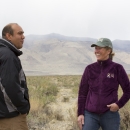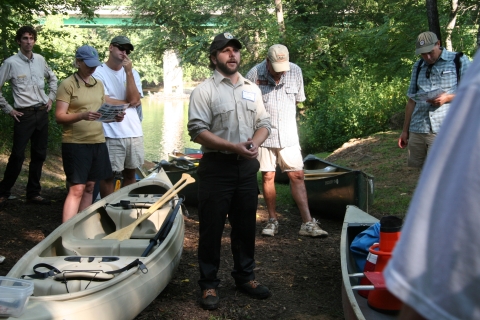About Us
At Georgia Ecological Services, we are working with others to conserve, protect and enhance fish, wildlife, and their habitats for the continuing benefit of the American people.
Our team is based out of three field offices located in Athens, Fort Moore, and Townsend, Georgia. With expertise ranging from mountains to estuaries, our biologists are working to conserve rare and imperiled species, like the Etowah darter and the eastern indigo snake, and promote the restoration of Georgia’s heritage landscapes, such as longleaf pine ecosystems. Learn more about our Projects & Research.
What We Do
We work with communities across Georgia and the southeastern United States to support conservation through: Endangered Species Listing and Recovery, Project Planning and Review, and Habitat Restoration.
To learn more about ways that you and your community can support conservation, check out our Projects and Research and Partners for Fish and Wildlife Program. To request an Endangered Species Act review of your project, please visit Project Planning and Review.
Our Organization
Our Species
Georgia is home to more than 70 species of plants and animals protected under the Endangered Species Act.
Our team of biologists at Georgia Ecological Services are the national lead for recovery efforts for 20 federally threatened or endangered species. We also work with other federally protected species that occur in our service area – including threatened and endangered species for which other offices have the recovery lead, and species protected under other laws, such as the bald eagle, protected under the Bald and Golden Eagle Protection Act and the Migratory Bird Treaty Act.
Projects and Research
Our team supports conservation at multiple scales, from on-the-ground species monitoring and habitat restoration to broader landscape-level planning.
Learn more about our Projects and Research.
Get Involved
We rely on strong partnerships and collaboration with state and local governments, non-profit organizations, industry and academic communities across Georgia and the southeast.
We work with federal, state, and local government agencies, universities, private landowners, businesses, and communities to accomplish conservation by protecting and recovering federally-listed, rare, and imperiled species. We assist in restoring habitat through the Partners for Fish and Wildlife and Coastal programs. We coordinate with project managers on federally authorized or funded projects to promote best management practices that avoid or minimize impacts to plant, fish, wildlife, and their habitats across Georgia.
























